My Visit to a Small Town - Winsen an der Aller
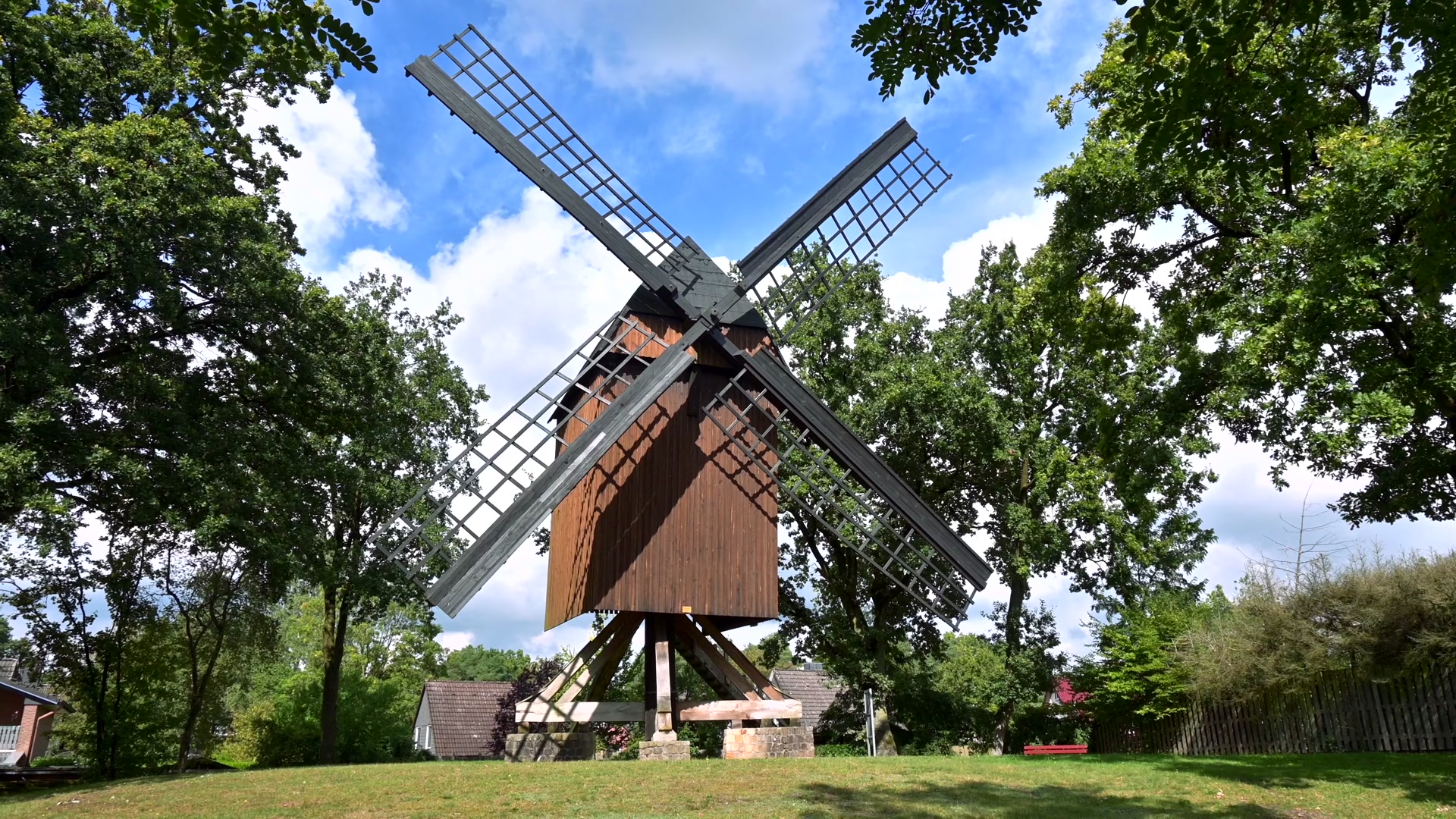
Hello friends. Spending time in small towns always gives me a sense of peace. Being away from the crowds, surrounded by nature and enjoying the slow rhythm of daily life helps me relax. I felt exactly this kind of calm when I visited a town called Winsen an der Aller. It was clear that everyone knew each other here. Even people I didn't know smiled at me and said hello as I walked by. This warm welcome made me feel like I belonged.
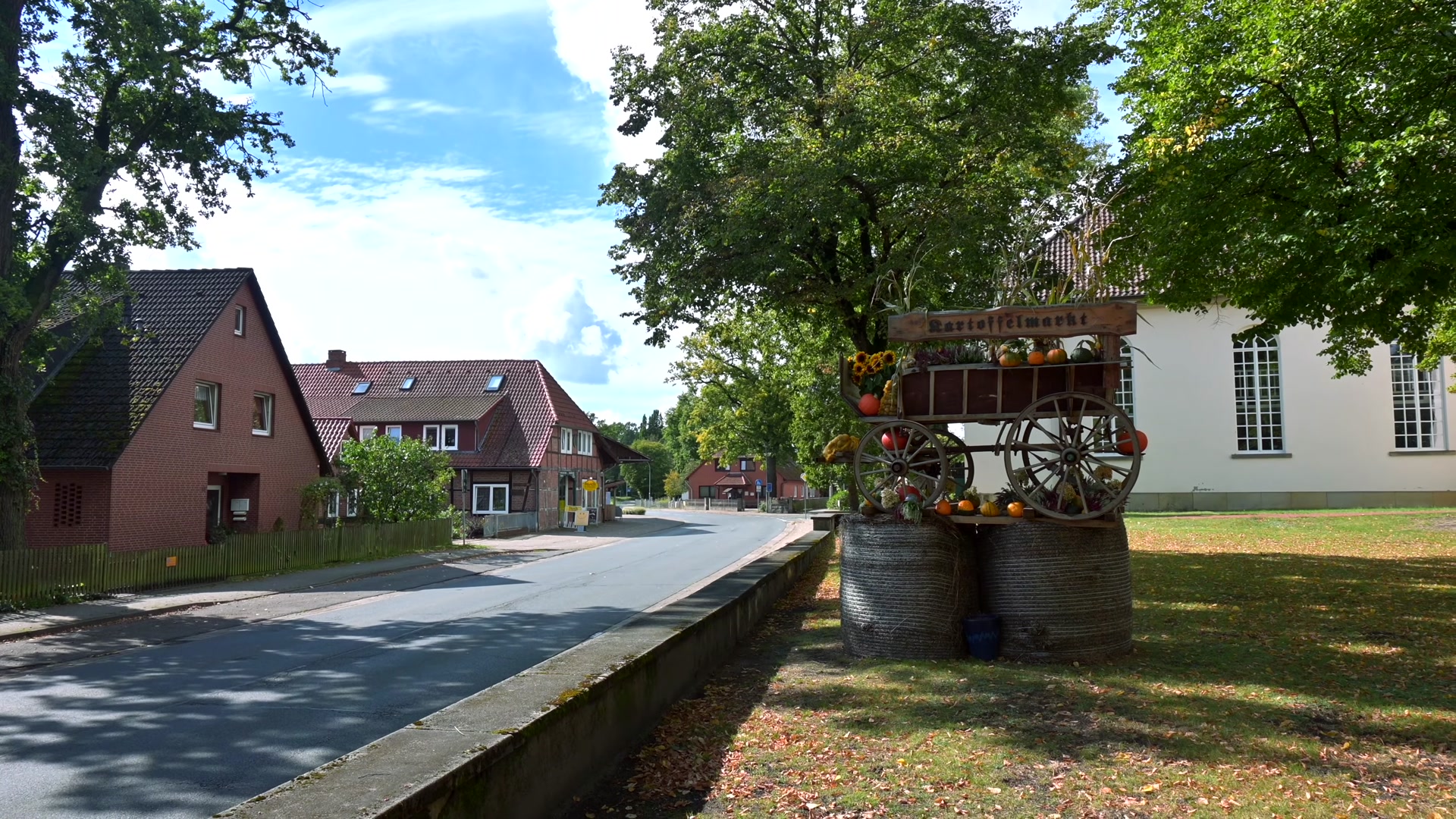
This is a small but tidy town located in Lower Saxony near the city of Celle. It has a population of around 13.500. It's situated on the southern edge of the Lüneburger Heath along the banks of the Aller river. In the town you'll find a historic windmill, an open-air museum called Museumshof, the Church of St. John the Baptist which dates back to the 9th century and the Stechinelli Gate. It also borders a large bird and nature reserve called Meißendorfer Teiche.

Winsen gave me the impression of a classic German town with its calm atmosphere, well-preserved historical character and natural beauty. It's not exactly a tourist hotspot. The nearest bigger town is Celle which is 10 km away. I don’t know why but Winsen reminded me of the small town from the movie Back to the Future.



Even though it’s not very big there are four supermarkets. There's Aldi and right next to it is my favorite Lidl. Rewe is more expensive but offers quality products. Then there's a giant Edeka which you probably shouldn't enter just for a quick shop or you might get lost. Thanks to these options you can enjoy good food even if you live in the countryside.

In Germany most supermarkets have containers nearby for recycling glass. The white ones are for clear glass and the green ones for colored. You’re only allowed to use them between 7 am and 7 pm on weekdays.

There are two banks in Winsen. The first is Sparkasse, which is a savings bank. Each town has its own branch and they aren’t connected. If you withdraw money from a Sparkasse ATM in another town you’ll be charged around 5 euros. The second bank is Volksbank which is more widespread and can be found even in Austria. If you're a customer you can use any of their ATMs without extra fees.

These banks and most shops are located on the main street that runs through the town. This street also sees quite a bit of traffic from nearby towns and villages. So Winsen is kind of a pass-through point.

Right across from the Rewe supermarket is the town hall (Rathaus). It’s a small but charming building. The doors are especially interesting, like toy doors. They reminded me of the castles and toy soldiers I had when I was a kid.
Next to the town hall there's an electric vehicle charging station. It started to rain as I passed by so I put on my raincoat. The streets were quiet and I could only hear distant car sounds. The rain made the peaceful mood of the town feel even stronger.

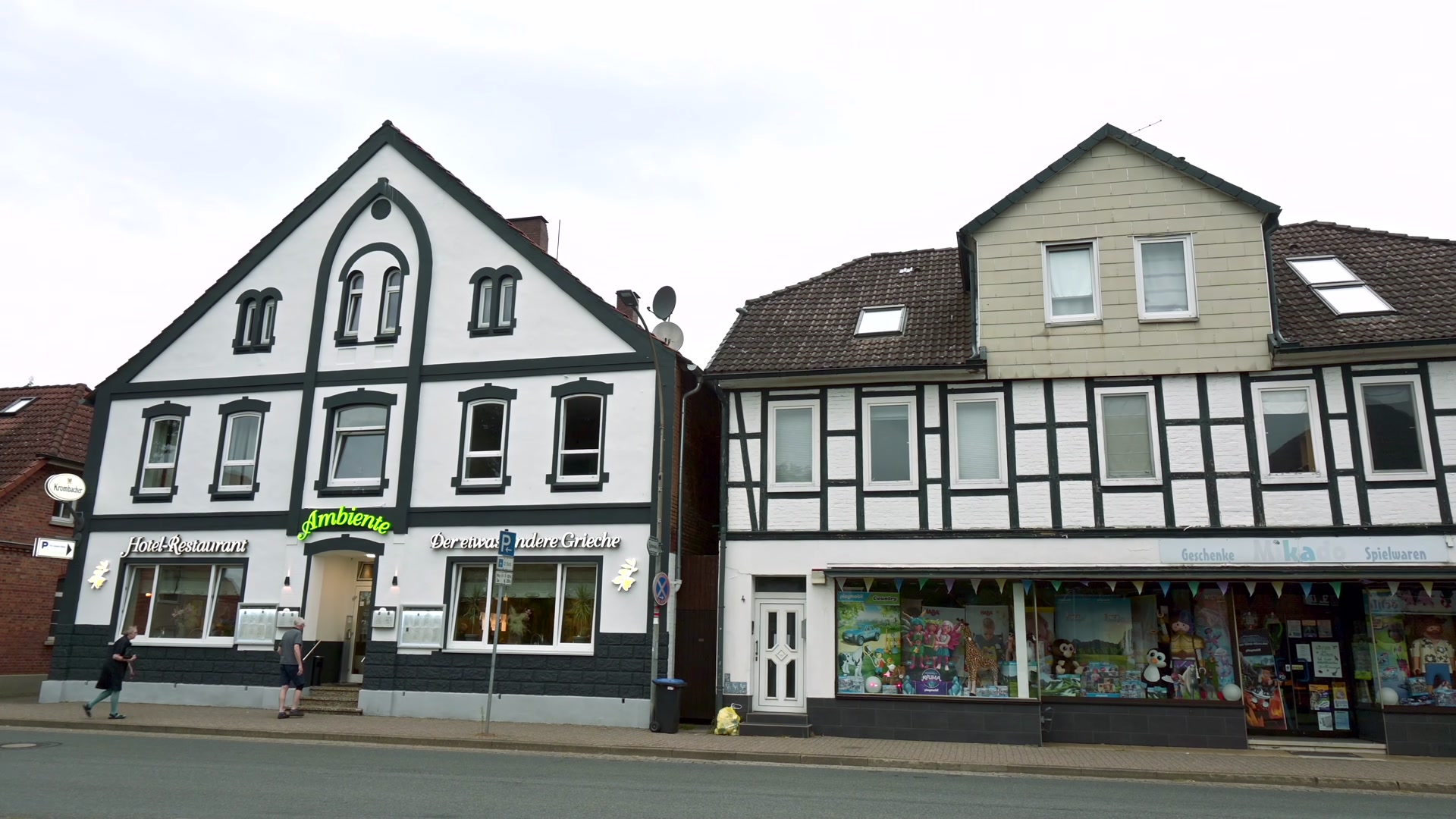

There’s no hospital in Winsen. The closest one is 10 km away in Celle. But there is a "medical center" where several doctors work. Everything I’ve described so far is along the main road that runs through the town.

This part of Germany is in the north and it was the rainy season while I was there. There was usually only one sunny day a week and the rest were rainy. Because the weather changed so often I always carried a raincoat with me.

Next to the medical center there’s a small square with a bike repair station. You can pump your tires or use the tools for free. There’s also a charging point for electric bikes and scooters. Everything seems thoughtfully arranged for public use.
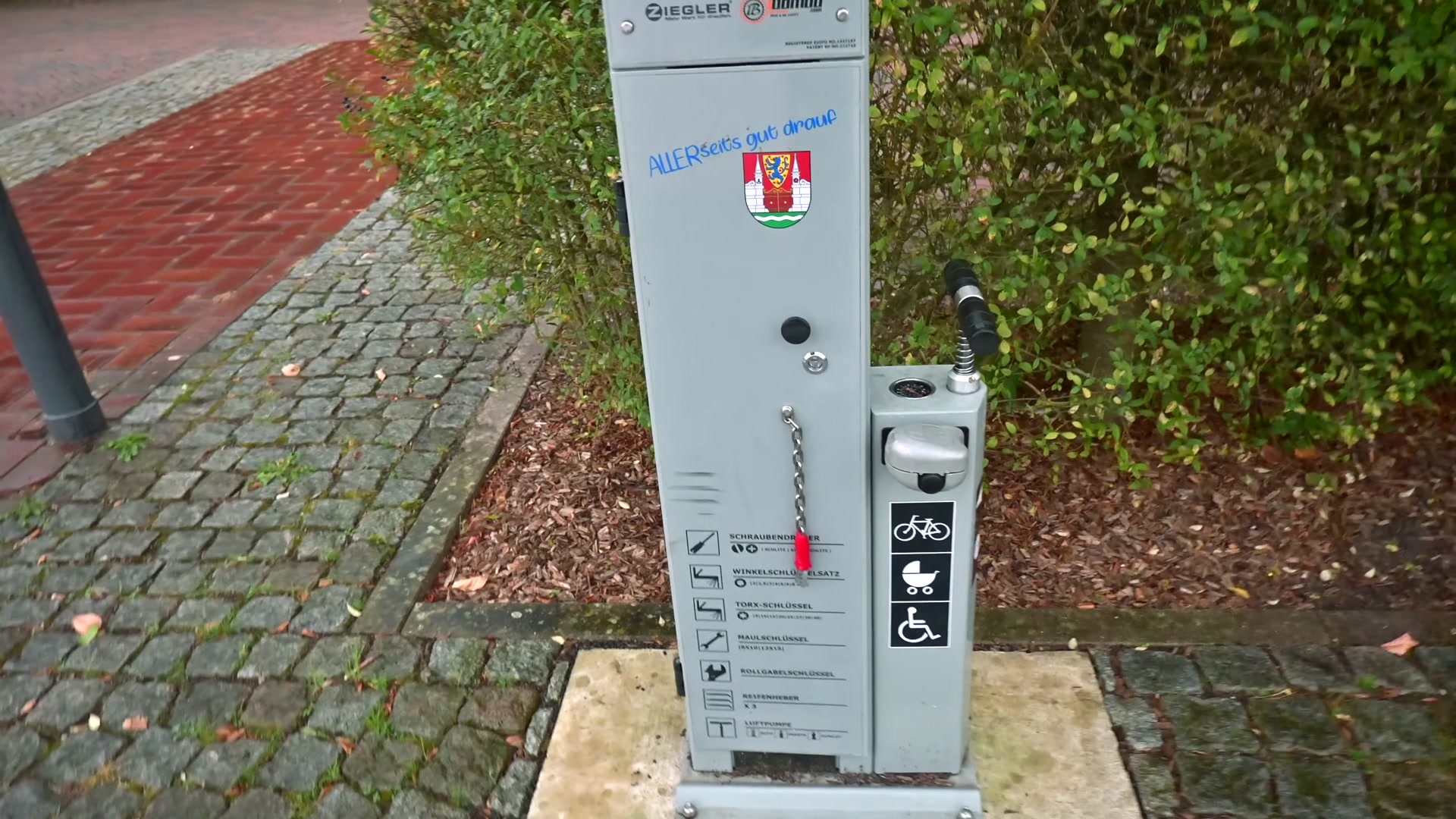
Winsen has two hair salons. One is next to the square and the other is on a back street. A men’s haircut there starts at 3 euros. When I reached the salon the rain got much heavier. I paused my walk and continued exploring the next day.

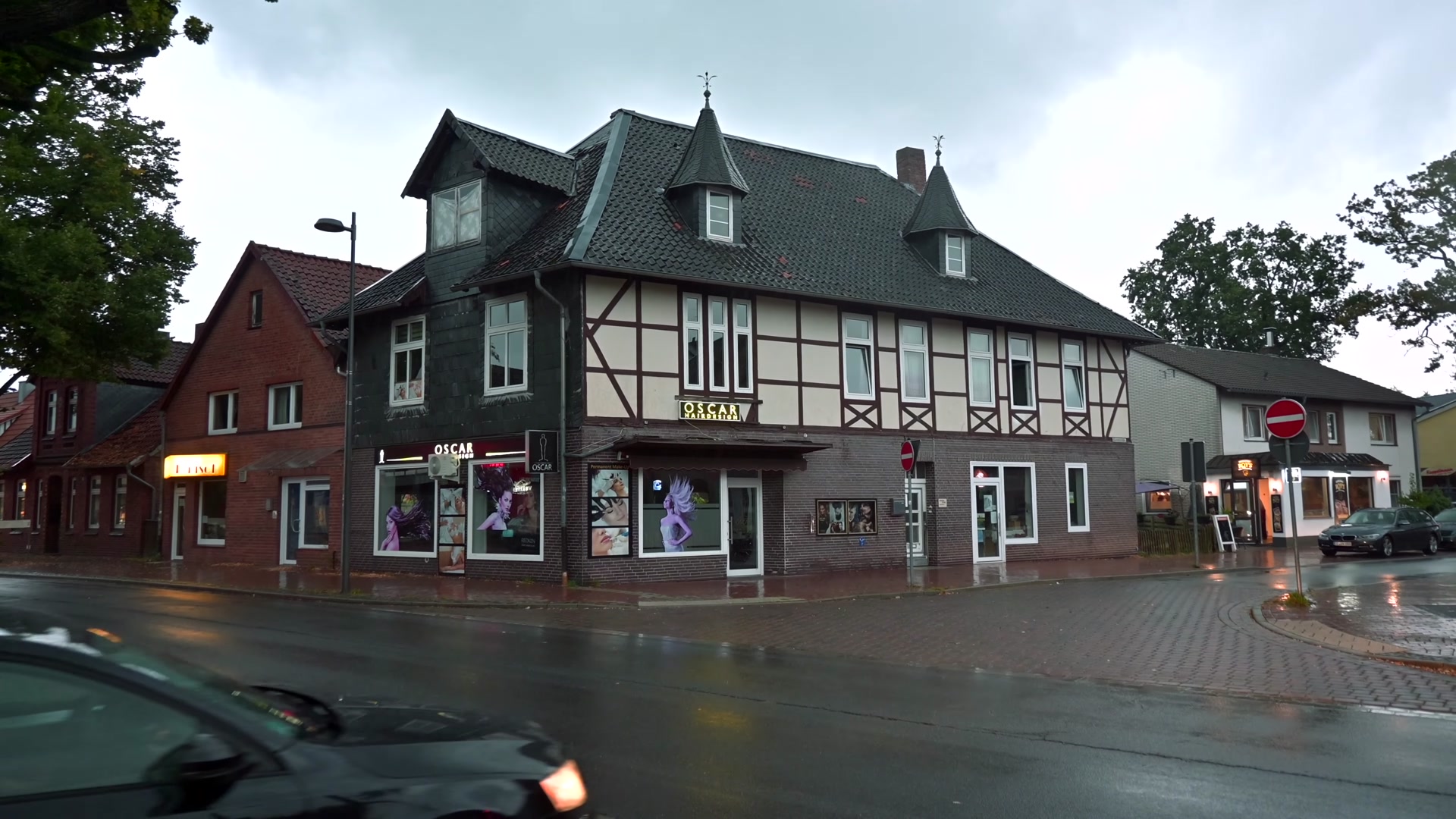
The town has two small tourist attractions. One is the open-air museum called Museumshof. It shows what life was like in past centuries. Everything is original and you can really feel the history. There are buildings from the 17th to 19th centuries and a farmhouse called Dat groode Hus from 1795 which is now used as a cultural center by the local government.

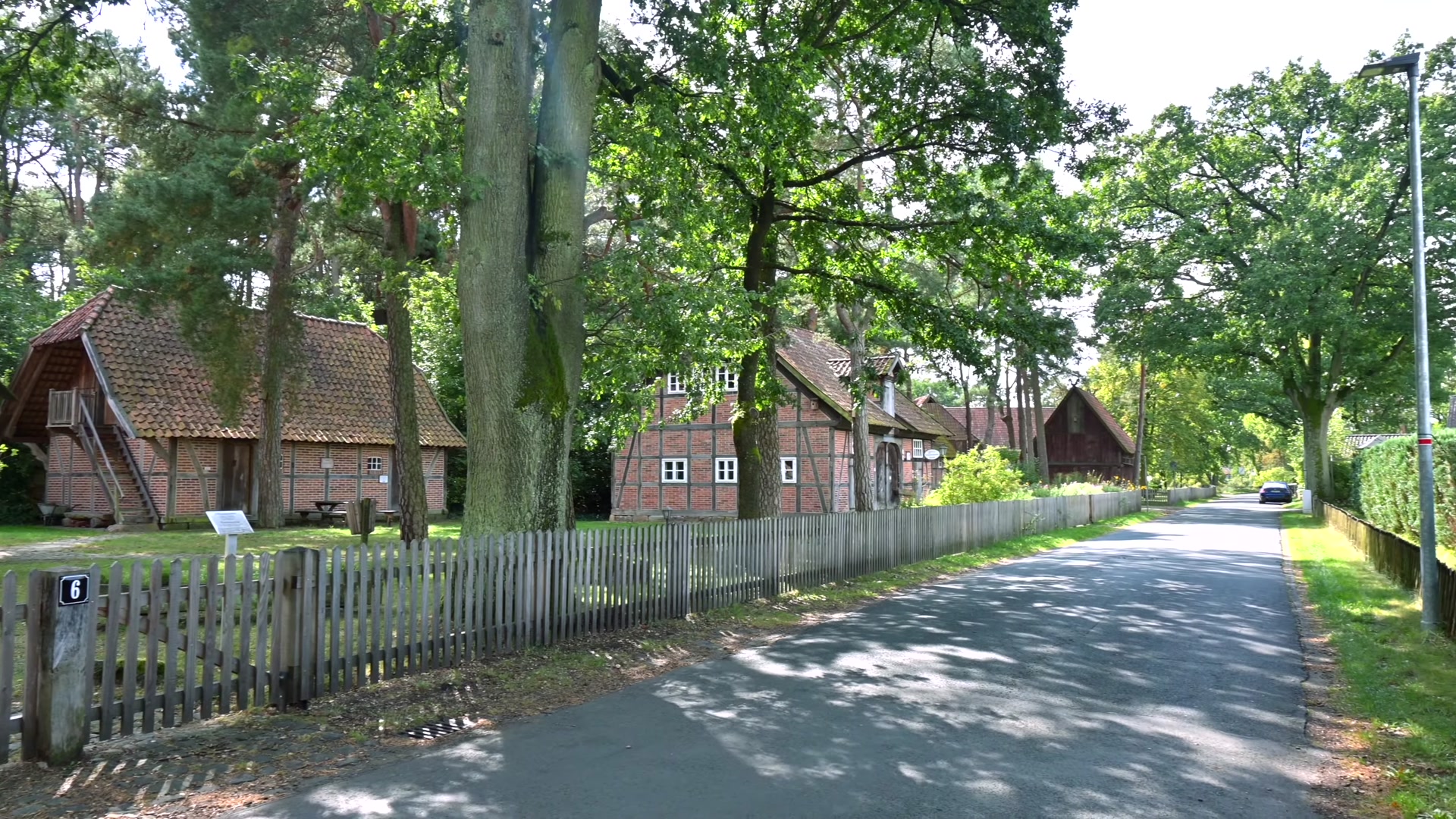
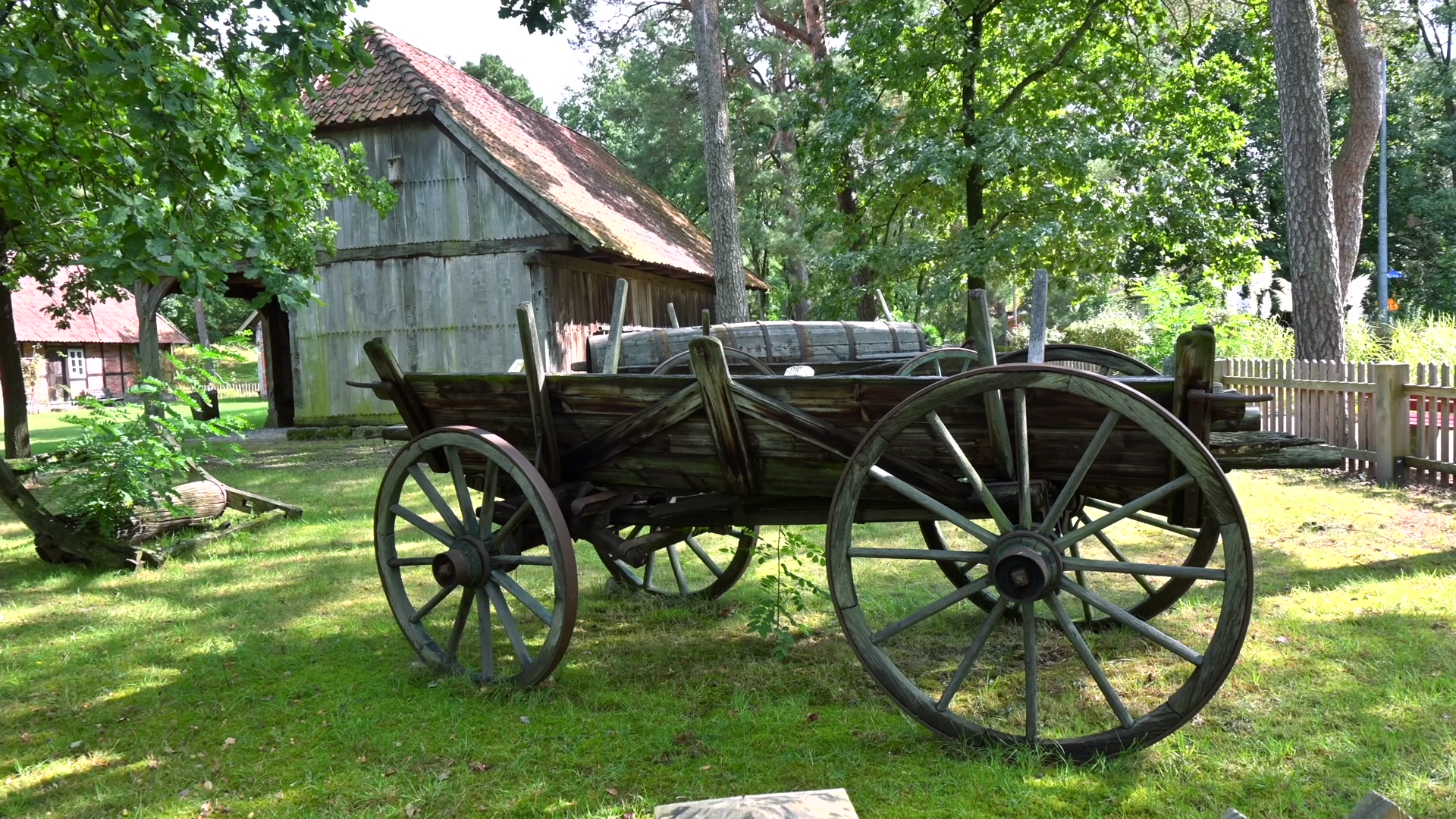
The second tourist spot is an old windmill. According to the sign it was first mentioned in 1589. It burned down 40 years later and was rebuilt in 1672. It operated until 1929 and then became a museum piece.



There is also a church here called St. John the Baptist. A Christmas market is held every year in front of it. The church is very old first mentioned in the 9th century. It belongs to the Evangelical Lutheran tradition and serves a large community across three areas. It’s an important religious and cultural site in the region.




In summer many people visit the town’s swimming pool. The entrance fee is 7 euros which is quite reasonable.

Even though it’s a small place the bus stops are modern. Buses don’t come often (only about four times a day) but the glass panels at the stops have black stickers to prevent birds from flying into them.


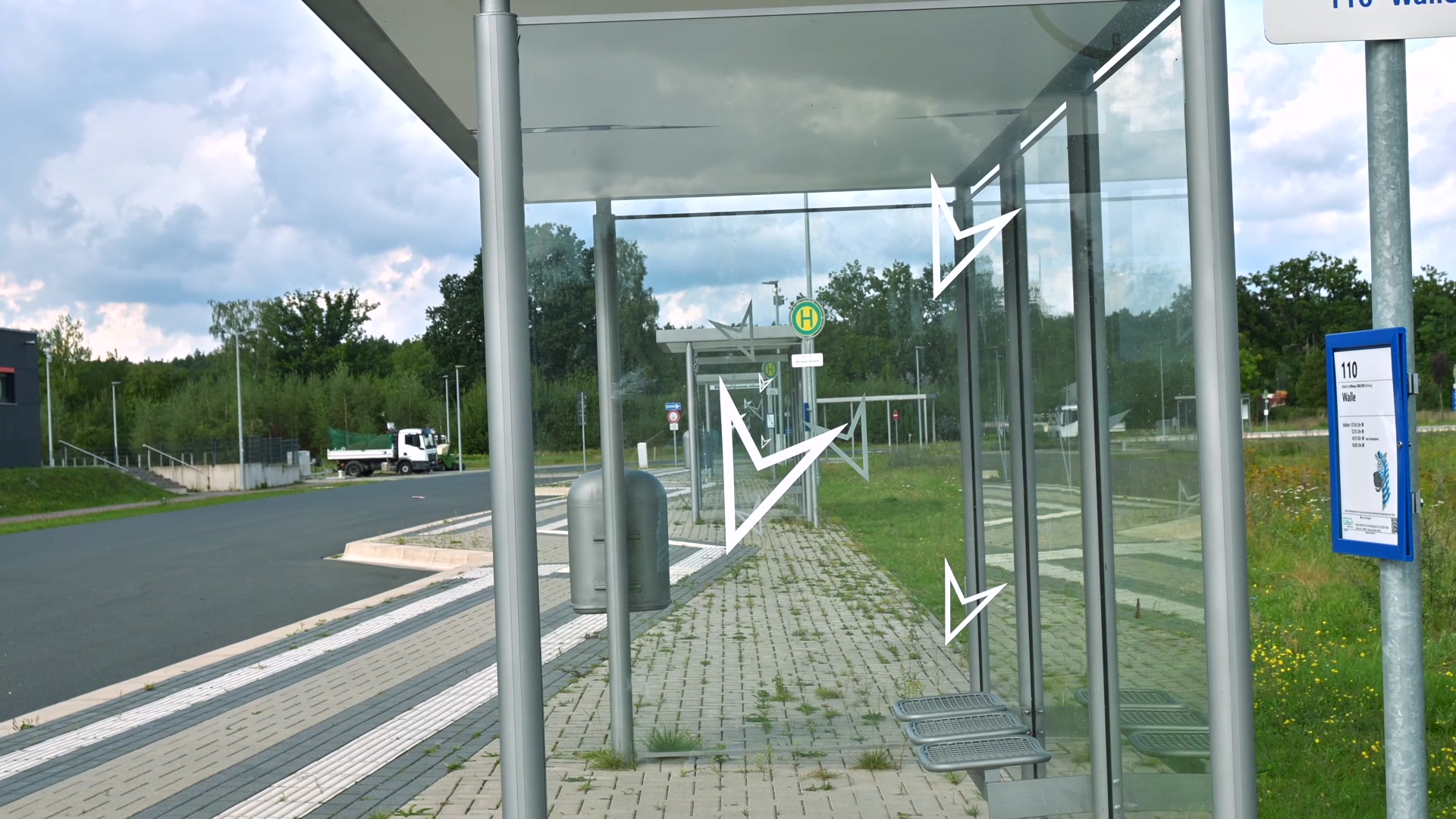
Many locals have installed solar panels on their homes to save energy. It helps reduce electricity bills though it only works well on sunny days.

The school in Winsen is quite large and all the children from the area go there. It has its own stadium football field and a space for table tennis. The campus is huge. Each building has a different purpose. For a village school it’s really impressive.
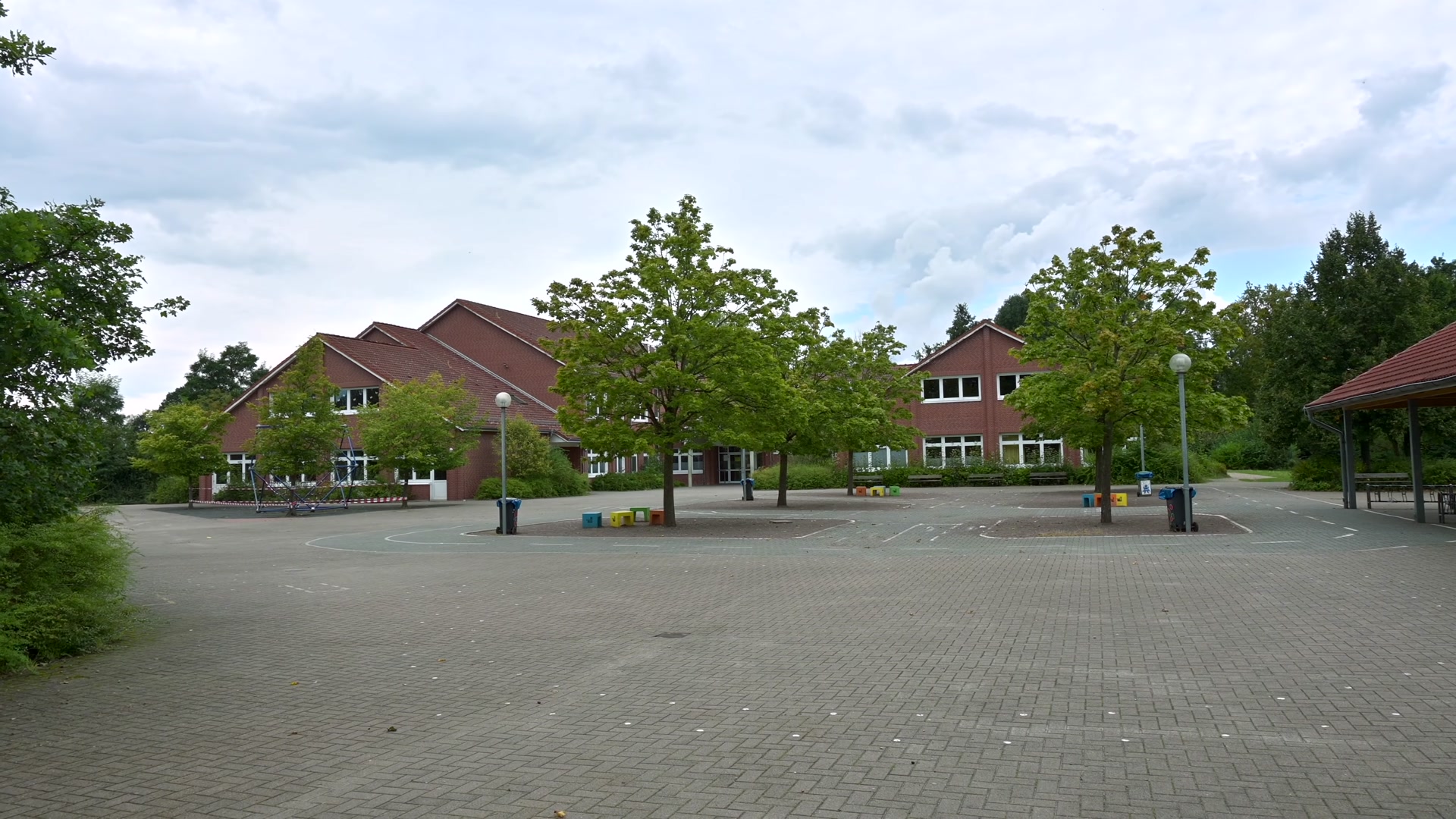
For some reason I saw a lot of Ladas and Mercedes G-Wagens in Winsen. These are expensive cars that usually cost more than 100.000 euros but they seem common here. Even though it's a small place the roads are almost perfect. There are a few cracks and patches but overall the asphalt is excellent.


There are two gyms in town. The buildings may not look great from the outside but inside they’re well equipped with American-branded machines.


In the village there are vending machines that sell eggs honey and potatoes. For example 5 kg of potatoes costs 6 euros. You just drop your money in a box. Nobody steals. It all runs on trust.

There’s no taxi stand in town. If you need a taxi you have to call one from a nearby city and you’ll have to pay for the ride to and from. There are no rental scooters either. These are common in many German cities but with only 13.500 residents it probably wasn’t seen as profitable here.
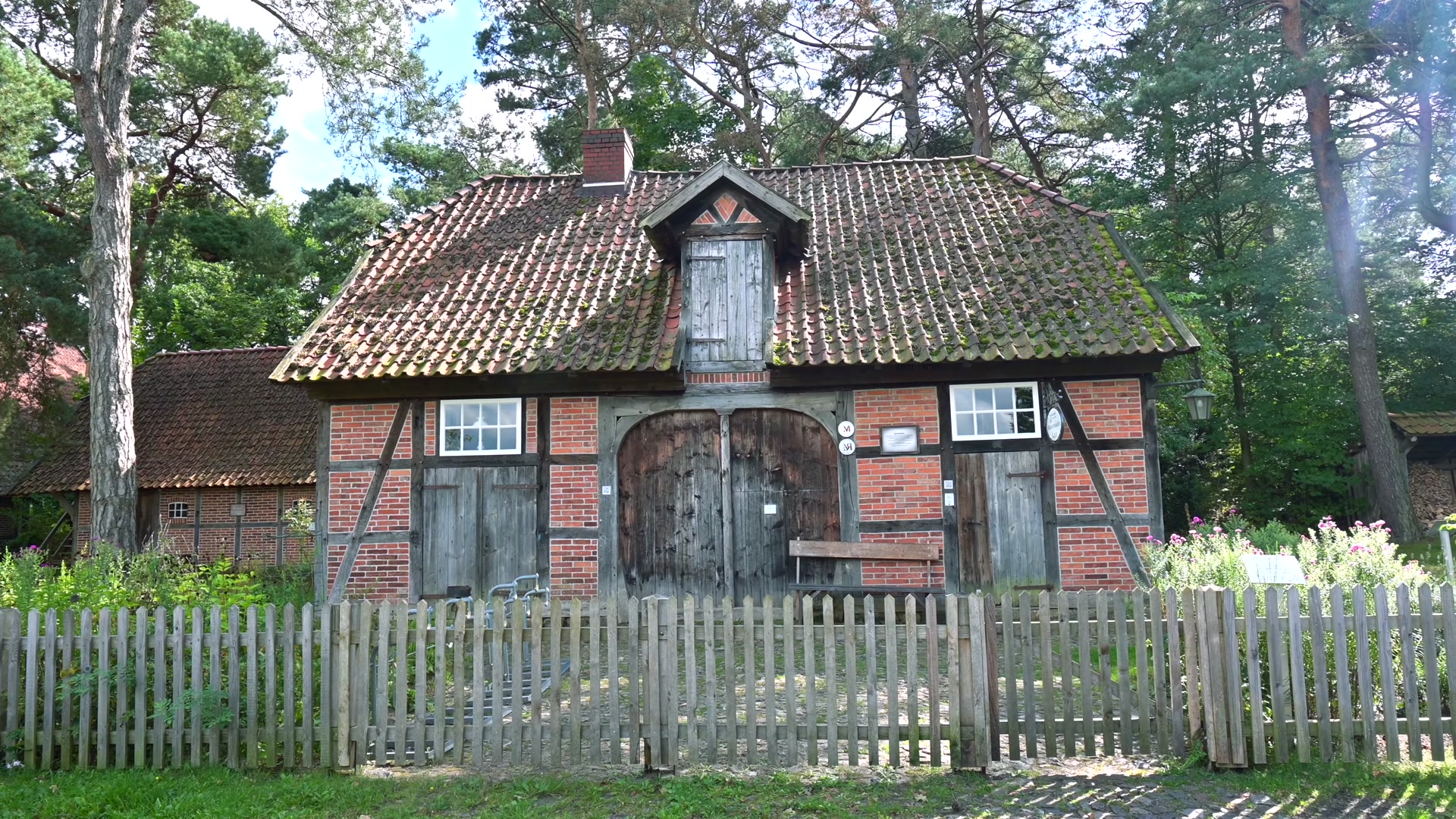
I talked to some locals. In the past everyone used to keep chickens cows and pigs but since it's no longer profitable people now just have homes and gardens. This place has become a peaceful self-sustaining countryside community. And let me say it again only 13.500 people live here but everything you need for a comfortable life has been thought of.
You can check out this post and your own profile on the map. Be part of the Worldmappin Community and join our Discord Channel to get in touch with other travelers, ask questions or just be updated on our latest features.
Congratulations @rebet! You have completed the following achievement on the Hive blockchain And have been rewarded with New badge(s)
Your next target is to reach 50000 upvotes.
You can view your badges on your board and compare yourself to others in the Ranking
If you no longer want to receive notifications, reply to this comment with the word
STOPHiya, @ybanezkim26 here, just swinging by to let you know that this post made it into our Honorable Mentions in Travel Digest #2602.
Your post has been manually curated by the @worldmappin team. If you like what we're doing, please drop by to check out all the rest of today's great posts and consider supporting other authors like yourself and us so we can keep the project going!
Become part of our travel community:
thank you so much 🥰
You are very welcome @rebet! it was well deserved. ☀️
We are already looking forward to reading more about your adventures!
Truly,sometimes in our life we need a break and the nature really helps a lot.Nature never failed to make us feel relax and it does help us to breathe.
So true 😊 Nature has a way of calming the soul and helping us breathe again. Winsen reminded me just how healing small towns and green spaces can be. Thank you for your kind words 🌿
What a super lovely small town ❤️❤️
Thank you 😊 Winsen is such a hidden gem: peaceful, charming and full of heart. I’m so glad you loved it too ❤️